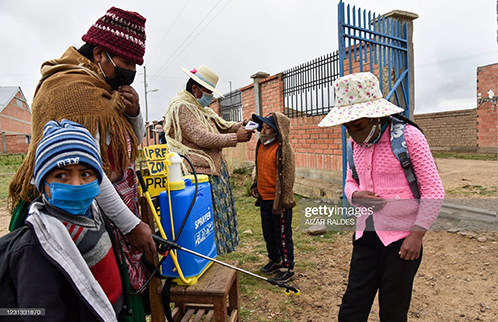News Americas, NY, NY, Tues. Feb. 23, 2021: In Latin America, the education system symbolizes the huge gap that exists between the rich and the poor. The majority of children living in this part of the world do not have access to quality education and this hinders the professional work-skills they could harness.
Some 76.8% of Latin America’s population belong to the low-income or lower-middle-income strata. Some 31.8 percent of the Latin American population is currently poor, and 11.5 percent is living in extreme poverty.
Poverty mostly affects children, adolescents, women, Indigenous people, Afro-descendant people, residents of rural areas, and those who are unemployed.
Meanwhile, inequality in income distribution has been widening in most Latin American societies.
The COVID-19 pandemic further widened the poverty and education gap between the haves and have-nots, as poor families in this region are unable to fend for tuition fees. This article shared by essay writers from Custom Writings highlights ways, including scholarships available for Latin American students to get credible education in 2021.
COVID-19 Effect on Education in Latin America
Over the past decades, a lot of youth in Latin America became the first in their homes and families to attain higher institution education. This is an expansion that holds hope for the nation and promises to propel the generation into a class of professionals and high-income skill practitioners.
According to experts, “investment in knowledge and education is priceless.”
However, with the emergence of the COVID-19 pandemic, hundreds have lost the ability to attend school. According to the Inter-American Development Bank, a huge number of students are leaving school and returning home as a result of inadequate finances to support their tuition.
Since the 2000s, a lot of investments have gone into the elementary and tertiary education system in Latin America. This helped the educational enrollment double to more than 50 percent of the university-age citizens, according to the World Bank.
Amid the lockdown, the rate of unemployment has increased, and many students cannot afford to go back to school. Many are not able to pay for even public educational institutions that cost above the minimum monthly wages.
Due to the movement restrictions caused by the pandemic, most classes moved online. Unfortunately, most students in this region do not have access to the Internet or effective cell phone connections and the digital divide is huge.
The president of Colombia, Ivan Duque, had made several efforts during the pandemic to cushion its adverse effects. He did this by helping students with an investment of approximately $260 million, according to Maria Victoria Angulo, the nation’s education minister.
Public universities too aren’t left out of the aid process, as some have distributed SIM cards or tablets and subsidizing tuition fees. Private schools that are sponsored have helped enroll several students thereby limiting the number of dropouts in the country.
How Latin American Students Can Get Education In 2021
Due to the rise in the pandemic effects, a lot of students have suffered the loss of educational experiences. This in turn leads to low acquisition levels of skills needed for the workforce in general.
From the various scholarships to the investment aid being provided, here are some of the ways they can be guaranteed better education in 2021.
1. Bridging the Educational Gap by Encouraging Investment in the Latin American Education Sector
Latin America is a broad and vast region. The education sector in this region has long been overlooked by international grant sponsors in America.
Only a little fraction of international funding is directed towards the Latin American education system. We owe it to ourselves as neighbors to invest and financially support these students of this region to get a standard education.
There has been a boosting and continued exchange system between Latin America’s biggest economies- Mexico and Brazil. Frequent exchange of goods and services between these two reasons should be enough reason to encourage an open dialogue when it comes to setting up standard education systems.
2. By Applying for Various Scholarship Programs Available for Latin American Students.
The Latin American region no doubt is made up of young bright, talented, and brilliant young people. These students, unfortunately, find it hard to finish up higher education as a result of a lack of funds for tuition and basic internet facilities.
However, there are a lot of scholarship programs available to these young people to ensure they attain standard education for a better future. Some of these grant-scholarships include:
- Joint Japan World Bank Graduate Scholarships
- Bank Santander Scholarship Grant for International Students
- Swedish Institute Study Scholarships
- Eiffel Excellence Scholarship Program
- Rotary Foundation Global Study Grants
- The Gates Millennium Scholarship
- The Fulbright Scholarships
Latin America is endowed with all the cultural spice of daily living. However, its education sector can’t be said to have the same allure over the years. The region suffers from increasing poverty and illiteracy rates despite the technological advancements going on across the globe. The educational sector of the region lacks the right investments that would drive the right change the region needs for improvement.










